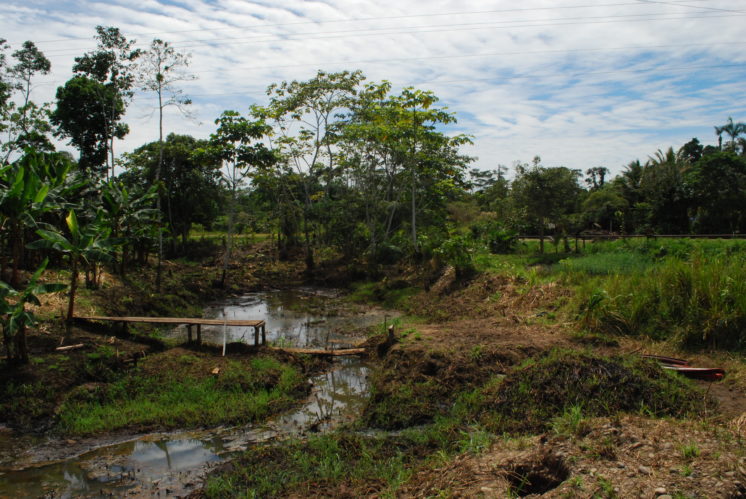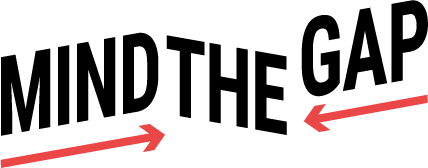Texaco succeeded in displacing a trial between the company and victims of its pollution from the United States to Ecuador, highlighting how corporations can use their corporate structures to move to different jurisdictions and avoid accountability for any harms done.
 Photo: K'allampero/Flickr
Photo: K'allampero/FlickrThe many lawsuits regarding the Texaco oil spills in the Ecuadorian Amazon from 1993 onward provide some of the best insights into the litigation strategies companies use to evade accountability for human rights and environmental harms. Here we focus on jurisdiction shopping, which allowed Texaco – later acquired by Chevron – to escape the enforcement of any ruling against the company to date.
Indigenous peoples from Ecuador brought a lawsuit against the oil company Texaco for mass contamination of their lands and damage to their health, allegedly resulting from the company’s dumping of toxic waste into the rivers and lakes over a period of decades. The case Aguinda v. Texaco Inc.[1] was filed in 1993 in the US, where Texaco was headquartered, but was dismissed after the US federal court accepted the company’s argument of the forum non conveniens doctrine (i.e. the court stated that Ecuador was a more appropriate venue for litigating these claims).[2]
Following the dismissal of the US litigation, the plaintiffs re-filed their case against Chevron (now owner of Texaco) in Lago Agrio, Ecuador. After judicial proceedings lasting 15 years, in which Chevron appealed against an unfavourable verdict up until the Constitutional Court of Ecuador, Chevron was found guilty and ordered to pay over US$ 9.5 billion in costs needed to remedy the environmental damage to the rainforest, and damage to the health of its inhabitants.[3]
Despite the ruling of Ecuador’s highest court, California-based Chevron continued its refusal to pay. Because the company claims it no longer has assets in Ecuador, the ruling is unenforceable by way of confiscation of assets. The plaintiffs then filed enforcement actions in Argentina, Brazil and Canada, but these were dismissed mainly on the basis that subsidiaries should not be held accountable for the compensation required from the parent company, even when it leaves those affected without remedy.
Parallel to the proceedings playing out in Ecuadorian courts, in 2009 Chevron sued the Ecuadorian state at the International Court in The Hague using the Investor State Dispute Settlement Mechanism.[4] In 2018, an arbitration panel ordered the Ecuadorian government to interfere in its judicial system, to cancel the Lago Agrio verdict and to prevent its enforcement in other countries. Furthermore, the arbitrators ruled that Ecuador should pay compensation to Chevron, and freed Chevron from its liability for the environmental damage. This award was denounced by more than 260 social organisations and networks as being unlawful and unconstitutional, putting private arbitration tribunals above domestic courts and thus undermining the rule of law.[5]
[1] Aguinda v. Texaco, Inc., United States Court Appeals, Second Circuit, 303 F.3d 470 (2002), https://www.casemine.com/judgement/us/5914b89badd7b04934786302 (accessed October 16, 2019).
[2] Business & Human Rights Resource Centre, “Texaco/Chevron lawsuit (re Ecuador),” https://www.business-humanrights.org/en/texacochevron-lawsuits-re-ecuador (accessed October 16, 2019).
[3] EarthRights International, “Amicus Briefs in Chevron/Ecuador Litigation,” https://earthrights.org/publication/amicus-briefs-in-chevronecuador-litigation/ (accessed October 16, 2019); CBS News, “Chevron Fined $9.5 Billion In Ecuador,” CBS News, February 14, 2011, https://www.cbsnews.com/news/chevron-fined-95-billion-in-ecuador/ (accessed October 16, 2019).
[4] Business & Human Rights Resource Centre.
[5] Collective. “Open Letter to Ecuador on the Chevron Case.” Committee for the Abolition of Illegitimate Debt, May 23, 2020. https://www.cadtm.org/Open-Letter-to-Ecuador-on-the-Chevron-Case. (accessed March 28, 2020)
